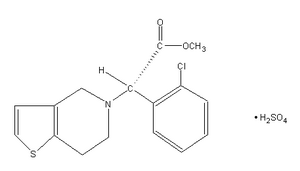Antiplatelet therapy with clopidogrel has provided significant secondary prevention for patients with transient ischemic attacks (TIA) and ischemic stroke. The effect was superior to aspirin and varied with the subgroup of patients studied. In the international Management of Atherothrombosis with Clopidogrel in High-Risk Patients (MATCH) study, Diener and colleagues studied the effect of adding aspirin to clopidogrel in the preven-tion of vascular events.
More than 7,500 patients 40 years or older were enrolled at 507 centers in 28 countries. Participants had sustained an ischemic stroke or TIA within the previous three months and had at least one additional risk factor (e.g., previous ischemic stroke or myocardial infarction, angina, diabetes, or symptomatic peripheral vascular disease). Exclusions included enhanced risk of bleeding complications and any contraindication to the study medications. All participants were receiving 75 mg of clopidogrel daily. After assessment, participants were assigned randomly to receive 75 mg of aspirin or an identical placebo in addition to their other medications. Participants were reassessed after one, three, six, 12, and 18 months. The principal endpoint was a serious vascular event, defined as ischemic stroke, myocardial infarction, vascular death, or hospital admission for a vascular event. Other end-points included death or stroke. Patients were monitored for any serious bleeding or adverse effect of treatment.
The 3,802 patients assigned to clopidogrel plus placebo were similar to the 3,797 patients assigned to clopidogrel plus aspirin. Women comprised 37 percent of each group. Previous ischemic stroke was reported by 26 percent of participants, TIA by 19 percent, hypertension by 78 percent, diabetes by 68 percent, and elevated cholesterol levels by 56 percent. One additional risk factor was reported by 79 percent of participants, and two or more risk factors were reported by 20 percent. In the group receiving aspirin plus clopidogrel, 596 patients (15.7 percent) reached a primary endpoint compared with 636 patients (16.7 percent) who received clopidogrel plus placebo. The absolute risk reduction of 1 percent was not statistically significant. Conversely, significantly more bleeding complications occurred in patients taking both medications (see accompanying table). Life-threatening bleeding occurred in 96 patients (3 percent) receiving aspirin plus clopidogrel, compared with 49 patients (1 percent) receiving clopidogrel plus placebo. Patients receiving clopidogrel plus aspirin also had more minor bleeding (3 versus 1 percent). Gastro-intestinal bleeding was the most common cause of life-threatening bleeding.
The authors conclude that although adding aspirin to clopidogrel was associated with a small decrease in major vascular events, this benefit was countered by a significant increase in bleeding complications, including life-threatening bleeding.
Diener HC, et al. Aspirin and clopidogrel compared with clopidogrel alone after recent ischaemic stroke or transient ischaemic attack in high-risk patients (MATCH): randomised, double-blind, placebo-controlled trial. Lancet July 24, 2004:364:331-7.
COPYRIGHT 2005 American Academy of Family Physicians
COPYRIGHT 2005 Gale Group



